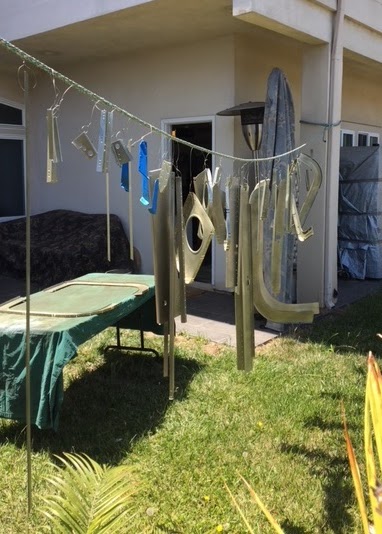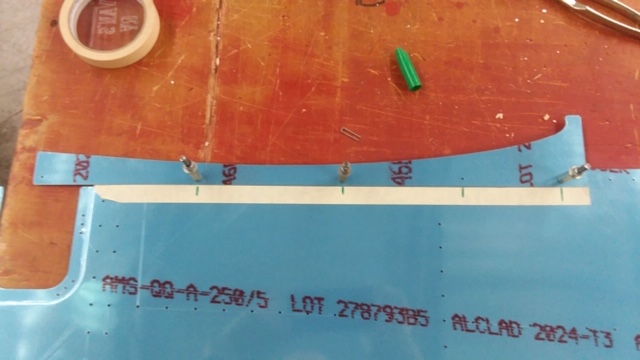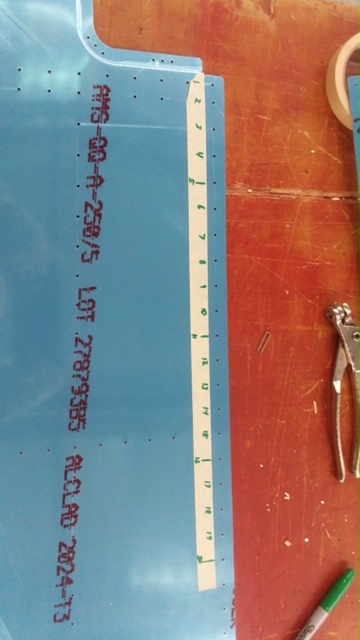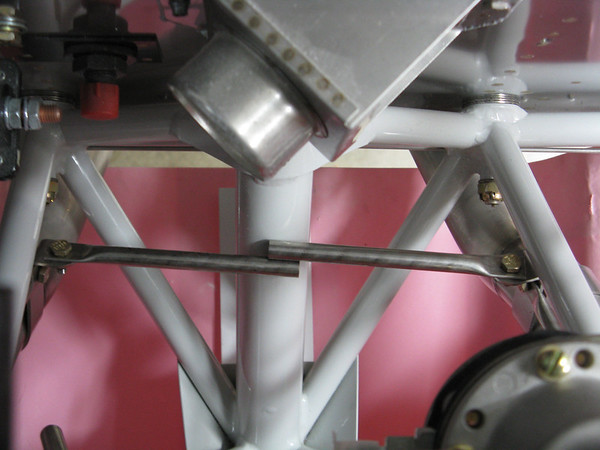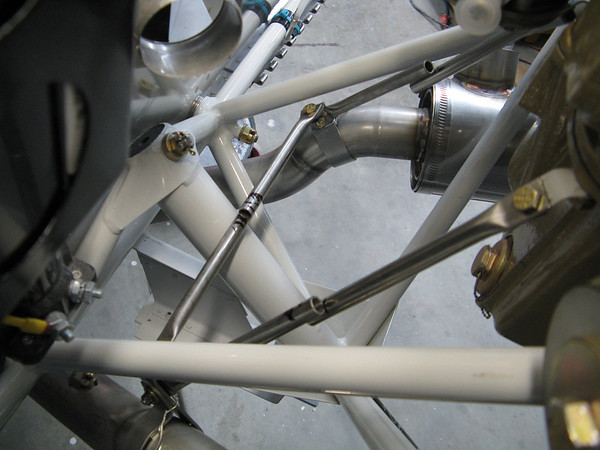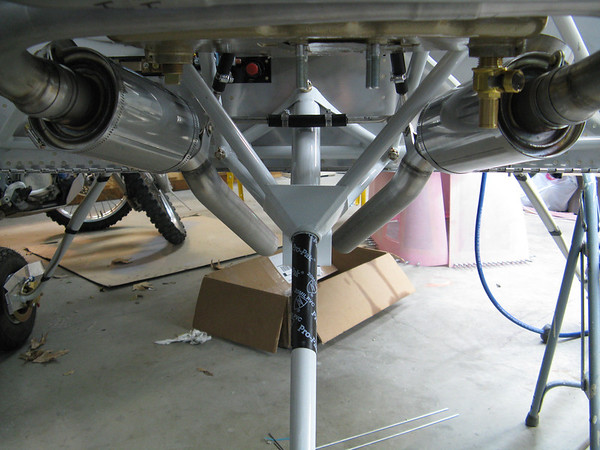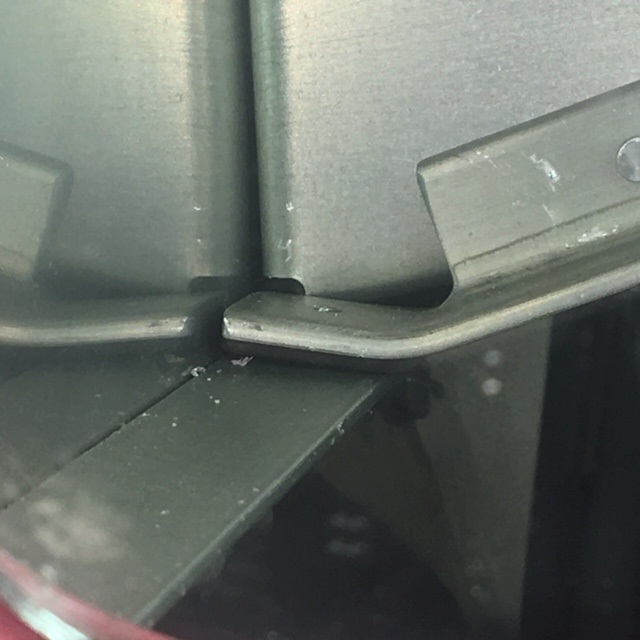PilotjohnS
Well Known Member
Small Steps are Still Progress
As the wing build continues, no real drama. The leading edges went on without much trouble; not nearly with the difficulty I envisioned from reading other blogs. As it turned out, most of the leading edge to spar rivets were reachable with the squeezer. I only had to drive about 10% of them, and of those only 5 on the right wing were blind and needed two people. I used a short double offset and taped it to the gun so it wouldn't rotate.
For the splice strip between the tank and the outer leading edge skin, I tweaked the nut plates to better conform to the skin using a vise and some scrap brackets. This worked out well.
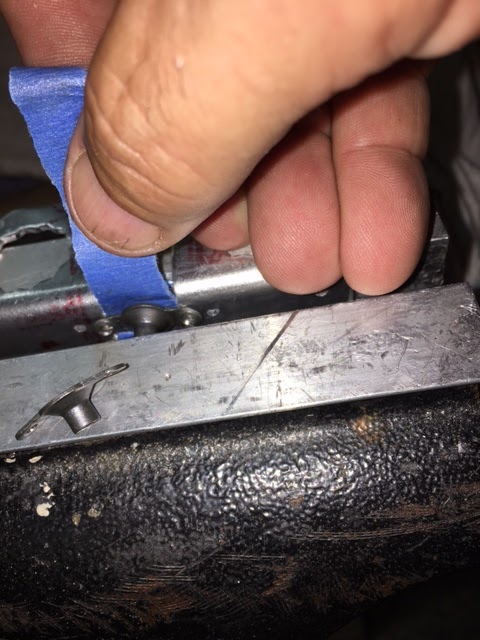
After installing the tanks, I noticed the skin thicknesses aren't all the same. Some are 25 mils , others are 32 mils. I wish I would have beveled the skins before assembly to make this transition smoother, but maybe there will be a chance to smooth the 7 mil step before paint.
I started riveting the skins on with my resident engineer-in-training. I am still trying to work out the best technique. I tried the long offset back rivet tool, but this takes so much umph on the gun the rivet heads aren't pretty; acceptable, but not pretty. So we tried the normal method as in the picture. This worked out well for the ribs, but still looking for a better method for the skin to spar rivets.
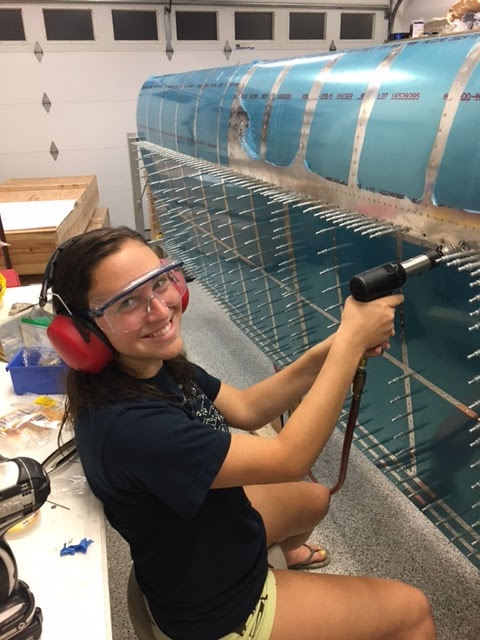
As the wing build continues, no real drama. The leading edges went on without much trouble; not nearly with the difficulty I envisioned from reading other blogs. As it turned out, most of the leading edge to spar rivets were reachable with the squeezer. I only had to drive about 10% of them, and of those only 5 on the right wing were blind and needed two people. I used a short double offset and taped it to the gun so it wouldn't rotate.
For the splice strip between the tank and the outer leading edge skin, I tweaked the nut plates to better conform to the skin using a vise and some scrap brackets. This worked out well.
After installing the tanks, I noticed the skin thicknesses aren't all the same. Some are 25 mils , others are 32 mils. I wish I would have beveled the skins before assembly to make this transition smoother, but maybe there will be a chance to smooth the 7 mil step before paint.
I started riveting the skins on with my resident engineer-in-training. I am still trying to work out the best technique. I tried the long offset back rivet tool, but this takes so much umph on the gun the rivet heads aren't pretty; acceptable, but not pretty. So we tried the normal method as in the picture. This worked out well for the ribs, but still looking for a better method for the skin to spar rivets.
Last edited:



